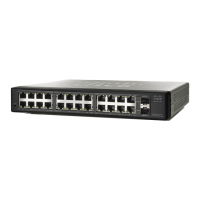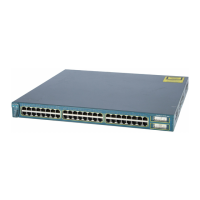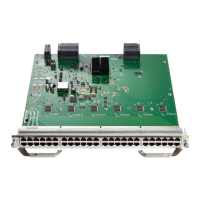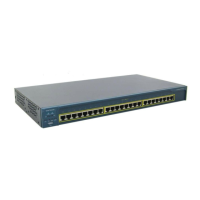The line cards perform the express forwarding between port adapters, relieving the RP of involvement in
the switching operation, thus also enhancing system performance.
Distributed Cisco Express Forwarding uses an interprocess communication (IPC) mechanism to ensure
synchronization of FIB tables and adjacency tables on the RP and line cards.
The figure below shows the relationship between the RP and line cards when distributed Cisco Express
Forwarding mode is active.
Figure 3 Distributed Cisco Express Forwarding Mode Operation
302316
Route Processor
FIB table
Routing
table
Line card
Adjacency
table
FE
Serial
IPC
Adjacency
table
Cisco device
running distributed CEF
FIB
Line card
Adjacency
table
T3
FDDI
FIB
Line card
Adjacency
table
OC-12
OC-3
FIB
In the figure above, the line cards perform the switching. In devices where you can mix various types of
cards in the same device, all line cards might not support distributed Cisco Express Forwarding. When a
line card that does not support distributed Cisco Express Forwarding receives a packet from one of these
other devices, the line card forwards the packet to the next higher switching layer (the RP). This structure
allows legacy interface processors to exist in the device with newer interface processors.
CEF Features Enabled by Default
• Per-destination load balancing and the universal load sharing algorithm
• Distributed tunnel switching
• Multipoint generic routing encapsulation (GRE) tunnels
• CEF distributed tunnel switching
• CEF Distributed Tunnel Switching, page 8
CEF Features Enabled by Default
Unresolved Adjacency
IP Switching Cisco Express Forwarding Configuration Guide, Cisco IOS XE Release 3SE (Catalyst 3850 Switches)
7

